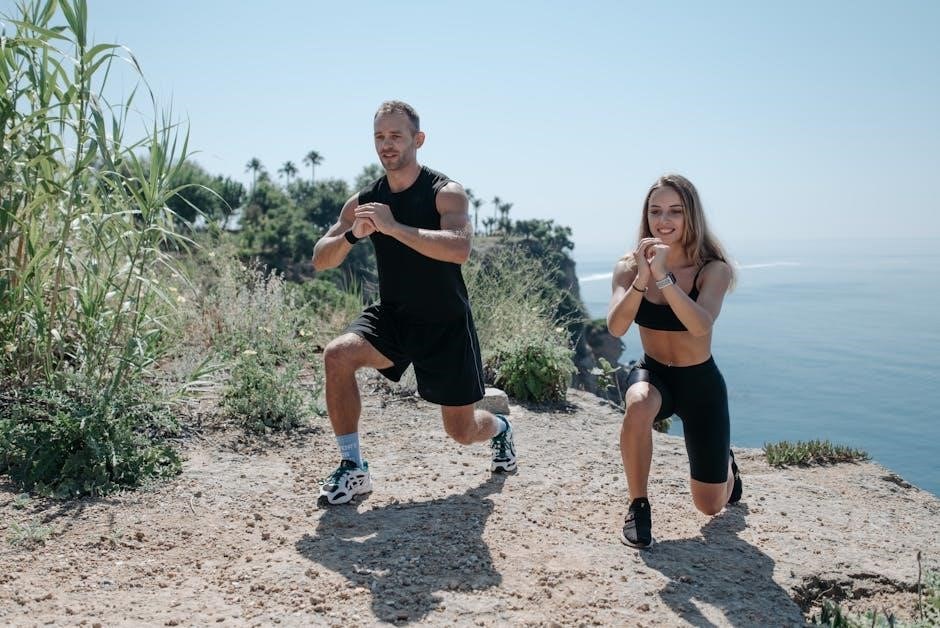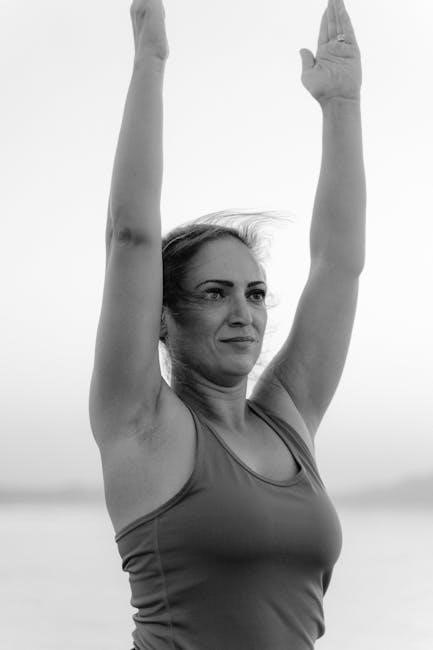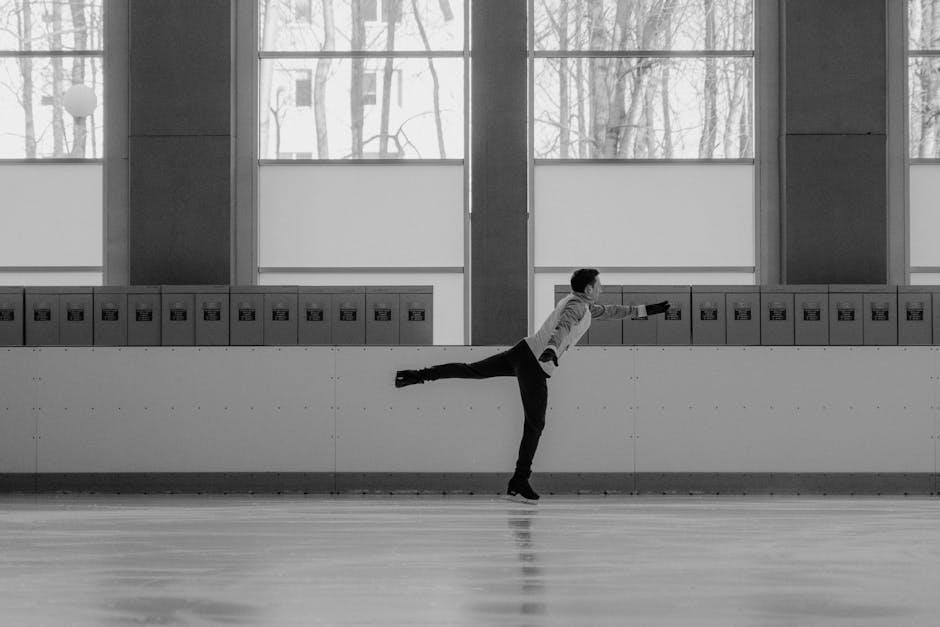Vastus medialis exercises target the inner thigh muscle, crucial for knee stability and patellar tracking. Strengthening this muscle helps reduce knee pain, improve joint function, and prevent injuries.
1.1 Importance of Vastus Medialis Oblique (VMO) for Knee Stability
The vastus medialis oblique (VMO) plays a critical role in maintaining knee stability by ensuring proper patellar tracking. Weakness in the VMO can lead to patellar misalignment, increasing the risk of injuries such as chondromalacia or patellar tendinitis. The VMO is essential for stabilizing the knee during movements like walking, running, and climbing stairs. Proper activation of the VMO helps maintain the patella’s central alignment within the femoral groove, reducing lateral pull and stress on the knee joint; Strengthening the VMO is particularly important for individuals with knee pain or those recovering from injuries, as it enhances joint stability and promotes even distribution of forces across the knee. A strong VMO is vital for preventing chronic knee conditions and improving overall lower limb function.

1.2 Benefits of Strengthening the VMO Muscle
Strengthening the VMO muscle offers numerous benefits, particularly for knee health and overall lower limb function. Enhanced VMO strength improves patellar tracking, reducing the risk of knee pain and injuries. It also boosts athletic performance by increasing power and endurance during activities like running and jumping. Strengthening the VMO can alleviate symptoms of conditions such as patellofemoral pain syndrome and improve joint stability. Additionally, a strong VMO contributes to better muscle balance around the knee, preventing overuse injuries and promoting proper movement mechanics. Regular VMO exercises can enhance recovery after knee surgeries or injuries, ensuring a faster return to daily activities and sports. Incorporating VMO-strengthening exercises into a workout routine is a proactive approach to maintaining knee health and preventing future complications.

Understanding the Vastus Medialis Muscle
The vastus medialis, part of the quadriceps, is a key muscle on the inner thigh. It plays a vital role in knee movement and overall stability.

2.1 Anatomy and Function of the VMO
The vastus medialis oblique (VMO) is the innermost portion of the quadriceps muscle group, originating from the femur and inserting into the patella. It plays a critical role in knee extension and patellar tracking, ensuring the kneecap moves smoothly in its groove. The VMO is essential for stabilizing the knee during movements like walking, running, and climbing stairs. Its function is closely coordinated with the other quadriceps muscles to maintain proper alignment and prevent lateral deviation of the patella. Weakness or imbalance in the VMO can lead to poor tracking, pain, and increased risk of injuries such as patellofemoral syndrome. Proper activation and strengthening of the VMO are vital for optimal knee function and overall lower limb stability.

2.2 Role in Patellar Tracking and Knee Movement
The vastus medialis oblique (VMO) is essential for proper patellar tracking, ensuring the kneecap glides smoothly within its femoral groove during knee flexion and extension. This muscle counterbalances the outward pull of the vastus lateralis, maintaining patellar alignment and preventing lateral displacement. Proper VMO function minimizes friction and stress on the patellofemoral joint, reducing the risk of pain and degeneration. During activities like squatting or stair climbing, the VMO stabilizes the knee, enabling efficient movement. Weakness in this muscle can lead to patellar maltracking, often causing anterior knee pain and conditions such as chondromalacia patella. Effective VMO activation is crucial for maintaining normal knee mechanics and overall lower limb function.

Vastus Medialis Exercises for Strengthening
Vastus medialis exercises enhance knee function and stability by targeting the VMO muscle. Techniques include quad sets, straight leg raises, and resisted knee extensions to strengthen and stabilize the knee.
3.1 Basic VMO Activation Exercises
Basic VMO activation exercises are essential for individuals beginning to strengthen their vastus medialis oblique muscle. These exercises focus on isolating and engaging the VMO without putting excessive strain on the knee joint. One common exercise is the quad set, where the individual tightens the quadriceps muscles while keeping the knee straight. Another effective exercise is the straight leg raise, performed by lifting the leg while maintaining a straight knee, which helps activate the VMO without putting pressure on the knee joint. Additionally, wall slides and heel slides are excellent for improving patellar tracking and VMO activation. These exercises should be done with controlled movements, focusing on proper form to ensure the VMO is engaged effectively. Starting with low repetitions and gradually increasing intensity is recommended to build strength and stability over time.
3.2 Intermediate and Advanced VMO Strengthening Techniques
Intermediate and advanced VMO strengthening techniques build on basic activation exercises by introducing resistance and dynamic movements. One effective exercise is the mini squat with VMO focus, where the individual performs a shallow squat while pressing the knees outward to emphasize VMO engagement. Another advanced technique is single-leg balance exercises, which challenge stability and promote VMO activation. Step-ups and resistance band leg presses are also excellent for strengthening the VMO under load. These exercises should be performed with controlled movements, gradually increasing resistance or depth as strength improves. Incorporating plyometric movements, such as step-downs or lateral hops, can further enhance VMO function and knee stability in more dynamic scenarios.

Incorporating VMO Exercises into Your Workout Routine
Incorporate VMO exercises 2-3 times weekly, starting with basic activation drills and progressing to resistance-based movements. Focus on proper form and gradual intensity increases for optimal results.
4.1 Frequency and Duration of VMO Training
For effective VMO strengthening, aim to perform exercises 2-3 times per week, allowing adequate recovery between sessions. Begin with 2-3 sets of 10-15 repetitions for basic activation drills, such as quad sets or straight leg raises. Gradually increase reps or resistance as strength improves. Each workout should last 15-20 minutes, focusing on controlled movements and proper form. Incorporate a mix of isometric and dynamic exercises to enhance muscle endurance and functional strength. Consistency is key; ensure exercises are performed regularly to maintain progressive overload and avoid plateaus. Rest for 30-60 seconds between sets to optimize recovery and muscle activation.
4.2 Tips for Proper Form and Progression
Proper form is essential for effective VMO training. Begin by engaging the VMO before other quadriceps muscles, ensuring the patella tracks centrally. Use manual resistance or biofeedback to isolate the muscle; Start with basic exercises like quad sets and progress to weight-bearing movements as strength improves. Focus on slow, controlled contractions, avoiding rapid or ballistic movements. Gradually increase intensity by adding resistance or depth to exercises. Monitor for signs of fatigue, such as poor tracking or pain, and adjust accordingly. Incorporate variety by changing positions and resistance types to keep the muscle challenged and prevent overuse injuries. Consistent progression ensures continuous improvement and reduces the risk of stagnation in training.

Safety and Progression in VMO Training
Focus on controlled movements and gradual progression to avoid injury. Prioritize proper form, ensuring the VMO engages before other muscles. Avoid overtraining and listen to your body for safe advancement.
5.1 Avoiding Common Mistakes During VMO Exercises
One of the most common mistakes during VMO exercises is failing to isolate the muscle, allowing other quadriceps muscles to dominate. This can lead to ineffective training and potential imbalances. Another mistake is rushing through exercises without focusing on proper form, which can strain the knee joint. Additionally, overloading the muscle too quickly can cause injury or discomfort. It’s crucial to start with low-intensity exercises and gradually increase difficulty as strength improves. Using a towel or pillow under the knee during certain exercises can help maintain proper alignment and prevent strain. Always prioritize controlled movements and avoid bouncing or jerking actions.

5.2 Signs of Progress and When to Increase Intensity

Signs of progress in VMO training include increased strength, improved knee stability, and reduced pain during daily activities or exercises. As the muscle strengthens, you may notice better patellar tracking and a reduction in knee-related discomfort. Once you can perform exercises with proper form and without strain, it’s time to gradually increase intensity. This can be achieved by adding resistance, such as using a Thera-Band, or progressing to weight-bearing exercises like step-ups or balance training. Avoid rushing progression, as this can lead to overtraining or injury. Instead, focus on mastering each stage before advancing to more challenging movements.





